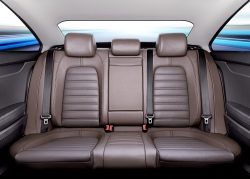Have you ever been driving along the highway and an 18-wheeler forced you into another lane or off the roadway? It’s a common occurrence and is scary for even the most experienced drivers. Because big rig drivers have larger blind spots than a typical vehicle, it’s not surprising that so many accidents involve tractor trailers. Jones & Swanson has experience with 18-wheeler accidents and hopes to use that knowledge to educate you on how to drive safely alongside 18 wheelers.
Big rig trucks bring a certain extra level of danger to the roads and the patrons surrounding them. These18-wheeler trucks have blind spots in front, on both sides and behind the large rig. Since the driver may not be able to see you, you may experience a time when the 18-wheeler will move over in to your lane without seeing you – in turn, forcing you out of the way!
It is important for you to remember to stay out of the “danger zones” when driving next to an 18-wheeler truck on any road or highway. Staying out of these “danger zones” will drastically reduce your odds of an accident with a large semi-truck.
“Danger Zones”:
- 20 feet in front
- On both sides
- 30 feet behind
Although the length of the danger zones on both sides of a truck can be unknown, it is important to use extreme caution when passing one of these large rigs on the highway. Riding alongside a large truck for any length of time can cause you to ride in the “danger zone.”
If you feel uneasy or uncomfortable near an 18-wheeler truck, consider changing lanes if you can do so safely to avoid their blind spots. The size difference between a typical tractor-trailer weighing 80,000 pounds and a standard passenger car weighing 5,000 pounds is an obvious reason to give the tractor trailer adequate road space.
If you have been injured in a car accident involving an 18-wheeler, or have any questions regarding tractor trailer safety, please give the knowledgeable attorneys at Jones & Swanson a call at 770-427-5498.
Categories: Safety Tips, Truck Accident, Trucking Accidents



